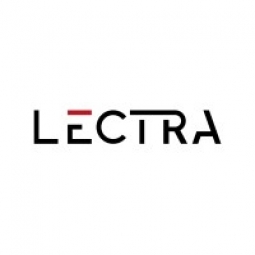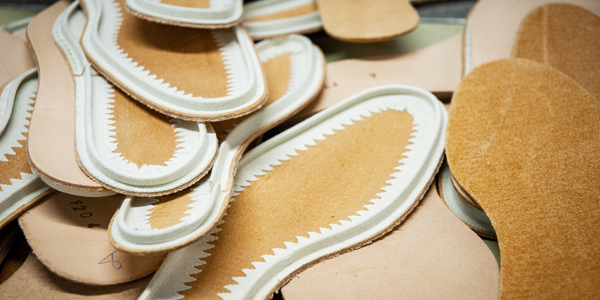下载PDF
Ese.Y Producing Smarter with Lectra
技术
- 功能应用 - 制造执行系统 (MES)
- 功能应用 - 产品生命周期管理系统 (PLM)
适用行业
- 服装
- 电子商务
适用功能
- 离散制造
- 质量保证
用例
- 预测性维护
- 库存管理
- 供应链可见性(SCV)
服务
- 系统集成
- 培训
挑战
Ese.Y, a leading manufacturer in the women's pants category in China, faced the challenge of adapting to the rapidly growing consumer demand for fashion and the rise of e-commerce. The company needed to transition to intelligent manufacturing to create a more agile supply chain and handle small-batch production orders. The unpredictable peaks in demand and the millennial preference for personalized products required a more flexible setup than traditional, order-based production. During the 'Double 11' festival in 2016, Ese.Y's Tmall.com store clocked RMB 10 million in sales in just 20 minutes, highlighting the need for an agile production setup to handle such spikes in orders.
关于客户
Ese.Y is a prominent manufacturer in the women's pants category, founded in 2001 and based in Zhengzhou, China. The company operates the largest production site for women's pants in China, located in the Zhengzhou Textile Industry Park. Ese.Y has built a reputation for its dedication to improving R&D and production within its manufacturing business. The company has successfully leveraged the growing consumer demand for fashion and the rise of e-commerce to achieve significant sales growth. In 2011, sales for Ese.Y women's pants on Tmall.com totaled RMB 8 million, which increased to RMB 80 million in 2012, RMB 200 million in 2013, and surpassed RMB 300 million in 2015. Today, Ese.Y holds the first place in the women's pants category on Tmall.com.
解决方案
Ese.Y chose Lectra's Vector cutting machines to enhance its production capabilities. These high-performing cutters offered a broad range of fabric-management options and were robust enough to handle complicated orders. Each Vector machine saved Ese.Y more than RMB 300,000 annually in labor costs alone. The machines also reduced fabric waste and helped lower the fabric cost per cut piece, thanks to their precise, zero-buffer cutting. The implementation of Lectra's cutting-room solutions made Ese.Y's production setup more agile, allowing the company to better handle fluctuations in demand. During the 'Double 11' festival in 2012, it took Ese.Y 10 days to deliver 80,000 orders, but by 2016, they completed production on the very first day the orders were received. Lectra's technology helped Ese.Y achieve higher standards without raising costs, producing standardized cut parts that eliminated irregularities and improved the sewing process.
运营影响
数量效益
相关案例.

Case Study
Fire Alarm System and Remote Monitoring Sytem
Fire alarm systems are essential in providing an early warning in the event of fire. They help to save lives and protect property whilst also fulfilling the needs of insurance companies and government departments.Fire alarm systems typically consist of several inter-linked components, such as smoke detectors, heat detector, carbon monoxide, manual call points, sounders, alarm and buzzer. The fire alarm system should give immediate information in order to prevent the fire spread and protect live and property.To get maximum protection a shoe manufacturer in Indonesia opted for a new fire alarm system to monitor 13 production sites spread over 160 hectars. Although the company had an existing fire alarm system, it could not be monitored remotely.It was essential that the new system would be able to be monitored from a central control room. It needed to be able to connect to the existing smoke detector and manual call point. Information should be easily collected and passed on to the Supervisory Control and Data Acquisition (SCADA) system. Furthermore, the system should have several features such as alarm management, auto reporting, being connected to many client computers without additional cost, and run 24/7 without fails. The company also needed a system which could be implemented without changing the architecture of the existing fire alarm system.

Case Study
IoT Applications and Upgrades in Textile Plant
At any given time, the textile company’s manufacturing facility has up to 2,000 textile carts in use. These carts are pushed from room to room, carrying materials or semi-finished products. Previously, a paper with a hand-written description was attached to each cart. This traditional method of processing made product tracking extremely difficult. Additionally, making sure that every cart of materials or semi-finished products went to its correct processing work station was also a problem. Therefore, the company desired an intelligent solution for tracking assets at their factories. They also wanted a solution that would help them collect process data so they could improve their manufacturing efficiency.

Case Study
Retailer Uses RFID Scanner to Improve Efficiency
Patrizia Pepe wished to improve the logistics of their warehouse: accepting incoming goods from their production sites, movement of items throughout
the warehouse, and packaging of goods for distribution to the retail locations. They initially tried to use barcodes for this function. Because barcodes must be individually scanned within a line-of-sight, the acceptance of goods coming into the warehouse was too time consuming. Working with the University of Florence, Patrizia Pepe instituted a five-month pilot project beginning in August of 2009 to test the validity of an RFID solution. The pilot involved tagging of about 60,000 items for the second seasonal collection, and convinced the company to move forward with tagging all items.

Case Study
Monitoring and Controlling Automatic Mixing and Dispensing Machines
As technology advances, textile manufacturing has been transformed from a labor-intensive to a partially or fully automated industry. Automation is significant in all segments of textile production - from spinning to printing, and textile machinery manufacturers are constantly searching for new technologies and automation processes will increase the productivity of their machines. The color paste mixing and dispensing machine is an essential part of the printing and dyeing process. With the advantage of automatically computerized controls and database management, the system can significantly improve its dispensing precision, working efficiency and production quality as well as reducing material consumption.

Case Study
Digital Transformation of Atlanta Grout & Tile: An IoT Case Study
Atlanta Grout & Tile, a Tile, Stone & Grout restoration company based in Woodstock, Georgia, was facing challenges with its traditional business model. Despite steady growth over the years, the company was falling behind the web revolution and missing out on the opportunity to tap into a new consumer base. They were using independent software from different vendors for each of their department information and workforce management. This resulted in a lot of manual work on excel and the need to export/import data between different systems. This not only increased overhead costs but also slowed down their response to clients. The company also had to prepare numerous reports manually and lacked access to customer trends for effective business decision-making.






